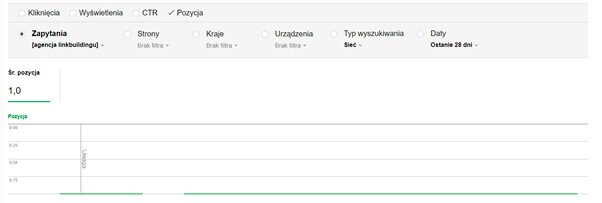What to do when your phrases have dropped on Google?

Have you ever come across a situation where the phrases you had positioned dropped in the search results unexpectedly? There may be a lot of reasons behind this, and today we will attempt to show various factors which might have had an effect on such a condition as well as suggest some step-by-step solutions.
The first step you should take is to verify if the position monitoring shows a factual drop. Refresh the positions to do so. Next, make sure that the proxies added to the monitoring are not banned by Google and whether they perform their role if possible. In addition, make an attempt to confirm the drop by means of another monitoring tool. Also, try to verify the position manually in an incognito mode (CTRL + SHIFT + N for Chrome). However, please remember that Google results are highly personalised, based on the IP location/address, browsing history, keyword search history, etc. Do not forget that slight position variations are completely natural as well.
In the next step, move on to the Search Traffic => Search Analytics tab in the Google Search Console tool. Find the phrase of your interest, check the “Position” checkbox and verify if any drops have taken place. The results for a phrase that is stably ranked in the first position in the search results are presented below.

If all the tools demonstrate that the phrases have dropped, it is worth verifying which factors may have affected their positions. The factors presented below have been divided into on-page (within the website) and off-page (outside the website) actions.
1. Off-page
1.1. Keywords
- Verify which phrases may cause position changes. This will help you establish if the possible issue is related to the whole website or e.g. one section only. Carrying out further steps, focus on these particular phrases/subpages, at least at the
- Verify if there is no cannibalisation taking place. It happens that two or more rival subpages adjusted for identical phrases may exist and compete, which is why Google displays different URLs on different positions.
1.2. Search results
- Verify if the result type in the SERP has changed. The drop may take place because e.g. Google had previously displayed company websites for a given phrase, but at present there are mainly advice articles.
- Verify what data is displayed in the title and description in the search results, if it corresponds with data displayed in the page code, and if the tags are not duplicated on a mass scale.
- Check whether the URL is displayed correctly and if this is a page that has previously ranked according to the given phrase. Search for e.g. pagination subpages or URLs with parameters, such as domena.pl/strona/3 or www.domena.pl/nazwa-kategorii?color=blue&size=m.
- Using the “site:domena.pl” command, verify what types of results appear in the list. If there are URLs e.g. containing custom characters (Russian, Chinese) or non-standard parameters, this may indicate that your website has been hacked.

- Verify if the list contains the most important URLs and if the index includes subpages adjusted to the given phrases.
2. On-page
- 2.1 Availability
- Verify tags related to meta=”robots” robot. Check if there are any “noindex” tags. More on this topic: https://support.google.com/webmasters/answer/93710?hl=pl.
- Check the directives from the robots.txt file and make sure that the subpages are not blocked for robots. Search Console => Scanning => robots.txt file tester. The correct message after verifying the address is provided below:
![]()
- Sprawdź czy treści znajdujące się na podstronach nie duplikują się zewnętrznie lub wewnętrznie.
2.2 Canonical tags
- Verify if canonical tags appear, and if they are used and located correctly.
- Verify if canonical tags are added correctly to the pagination subpages, filtering, etc.
- More on this topic: https://support.google.com/webmasters/answer/139066?hl=pl.
- Make sure that the subpages that are landing pages only appear under a single URL.
2.3 Status codes
- Check if the previous redirection settings have changed.
- Verify if redirects work properly, if the code of the desired redirect is returned and if there is a redirect loop.
- Make sure that the landing pages return code 200.
2.4 Google Search Console
- Verify if Google has reported any irregularities to you in the message section.
- Check if you have received a manual penalty. Search Traffic => Manual Actions.
- Confirm if the drops in the monitoring are reflected in GSC, as mentioned at the beginning of this article.
- Go to the Scan => Indexing Errors tab and analyse the indexing errors.
- Verify how Google renders a subpage in the Indexing => Indexing Errors => Download as Google tab.
- Verify the indexing status, since a sudden drop may indicate technical issues; Google Index => Indexing status.
- Does Google report any security issues?
Summary
The most common factors that may influence the drop in the positioned phrases have been listed. However, some of the steps required to improve this state involve advanced SEO-related knowledge, which is why it is definitely worth referring to professionals who will guide you and make your website go back to the previous positions.

Leave a Reply
Want to join the discussion?Feel free to contribute!